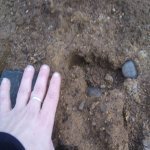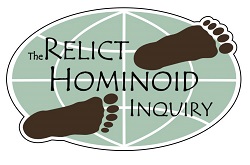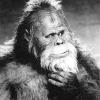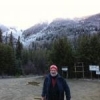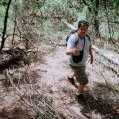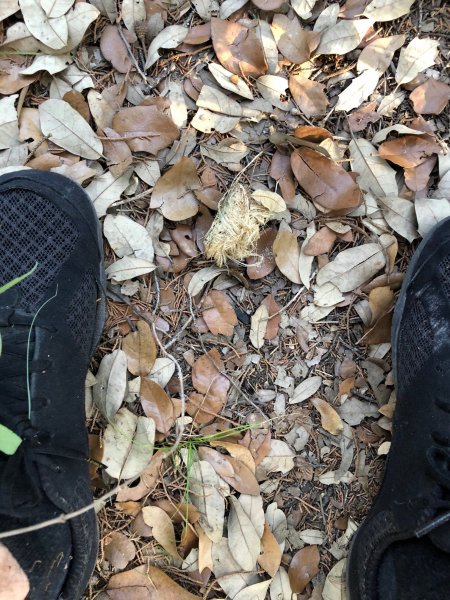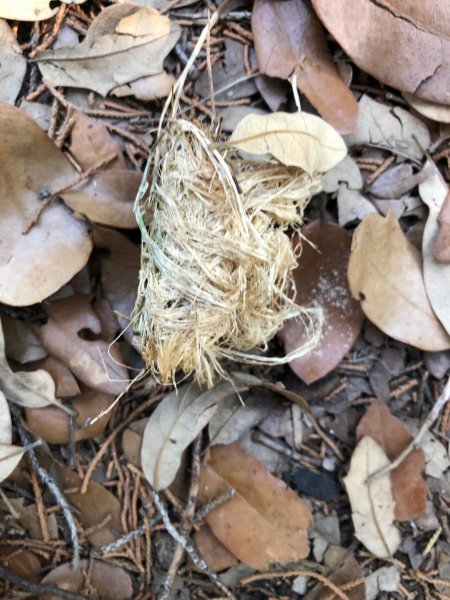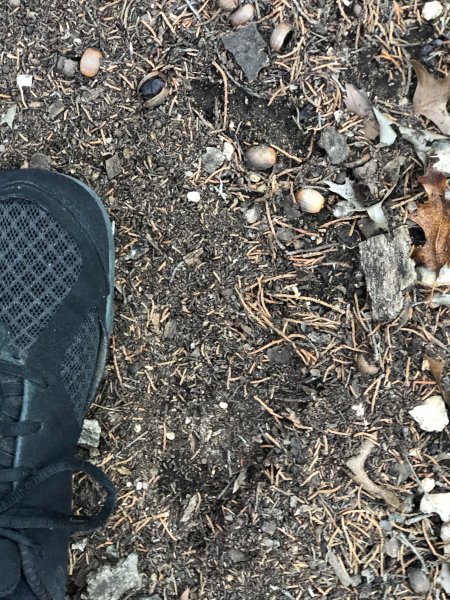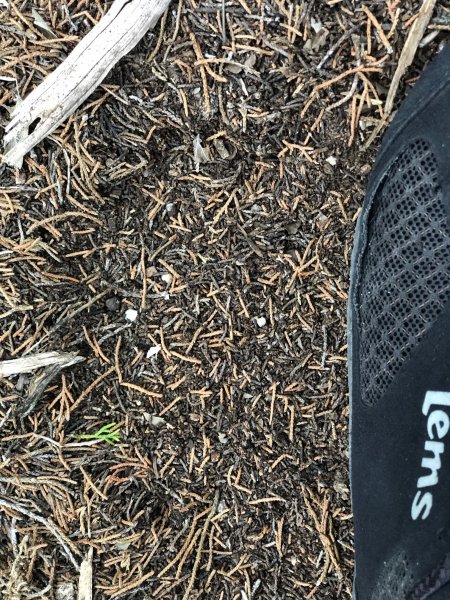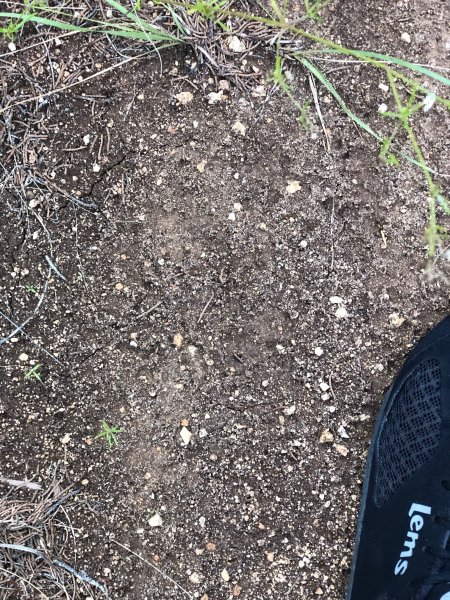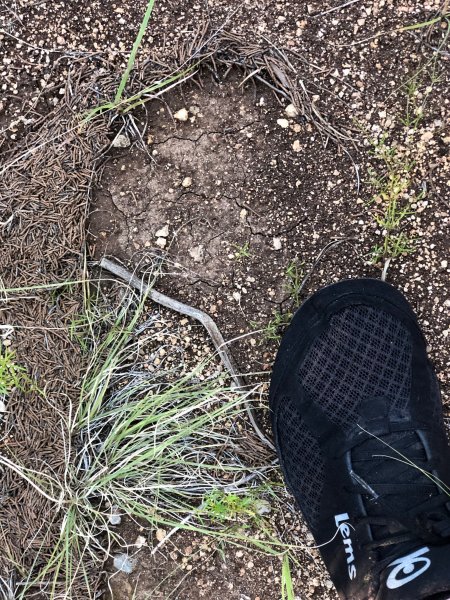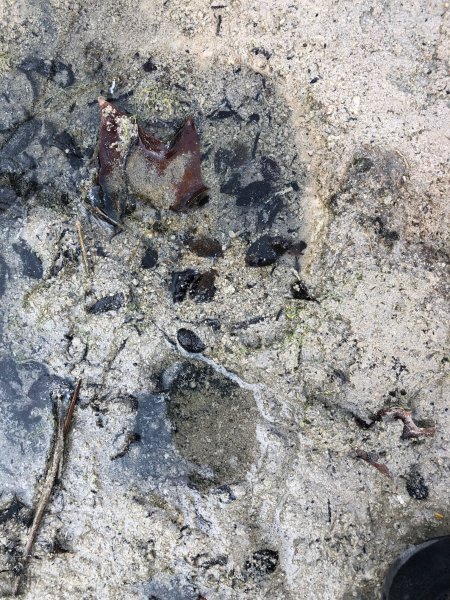Leaderboard
Popular Content
Showing content with the highest reputation on 09/08/2020 in all areas
-
You mean, did I want to get out of there? Well, no. Not initially, while they were there watching us watching them. I was fascinated. Like I said, I had a sense of security by standing next to my open car door. It's when they DISAPPEARED and were no longer on the FLIR that we decided they could be anywhere and we should be somewhere else. I tried looking to see if they were belly crawling to get closer, but I didn't see anything. I think they just bailed. So did we! Yes, I think your chances improve if you give them all the advantages. As scary as that is, I think it makes sense and it worked. I think they bugged out when NorthWind pointed at them - and I think they realized that WE COULD SEE THEM IN THE DARK. That's when they left. Up to that point, I think they were actually moving in a bit closer. You can see in our video that originally they were behind the trees, and I think they moved in front of them and their signatures became brighter. We observed two. And the prints we find are of a family of three. These two areas are 100 miles apart. I cannot bet that the next bigfoot would behave as expected, so each encounter possibility would have to be taken individually. I don't know. We went out last night in the dark to a place where I have encountered them twice (my belief is that they were bigfoots). I would have been scared spitless if we had seen one on the FLIR; but I went anyway and would do so again. We did see eyeshine across the river, but it could have been anything. We frequently follow game trails, so yeah, running into one far away from our vehicles is always possible. I'd be scared, but there's an adrenaline rush to it too, honestly. I enjoy it.2 points
-
Reprinted with Permission 9/2/2020 The RELICT HOMINOID INQUIRY 2:103-122 (2013) Brief Communication FOOTPRINT EVIDENCE - THE LONDON TRACKWAY Cliff Barackman Portland, OR 97220 Correspondence to: Cliff Barackman, email: NorthAmericanBigfoot@gmail.com. © RHI ABSTRACT In February, 2012 a long line of large human-like footprints was found in the muddy lakebed of Cottage Grove Reservoir near the unincorporated town of London, OR. Many of the footprints were cast, and numerous measurements were obtained from the site. An analysis of the collected casts and measurements has given more insight into the track maker. The inferred gait of the track maker is consistent with other purported sasquatch trackways in step length and lack of straddle. Anatomical features of the foot can be inferred from observations of the casts, such as toe stems, fat pads, underlying bone structure, and possibly toe nails. The spontaneity and natural way the trackway seems to have been laid down supports the hypothesis that it was made by a wild primate as of yet still unrecognized by science. Further analysis is needed to evaluate this hypothesis. KEY WORDS: sasquatch, Bigfoot, bipedal locomotion, Oregon On Sunday, February 12, 2012, Max Roy, of Eugene, OR, walking his dog happened upon some large ( 38cm) human like footprints near the shore of Cottage Grove Lake outside the unincorporated town of London, OR. He returned the next day to take photographs of the prints (Fig 1.). The first four footprints were found on a muddy berm above the lake bed . When initially discovered, the prints were reportedly in excellent condition, but in the interval before they were photographed, precipitation had filled the footprints and slightly distorted their previously crisp shape. Word of this find passed through several people until it finally reached me on Wednesday, February 15, 2012. I instructed another researcher ,Toby Johnson (Eugene, OR) how to cast these footprints. The next morning I received an excited call from Johnson telling me there were over 100 footprints previously overlooked in the muddy lake bed nearby. During the winter, the Army Corps of Engineers lowers the lake level exposing more than 100m of muddy substrate. The additional footprints traced a path through this muddy sediment and adjacent sandy banks. After arriving at the site that evening, another investigator ,Chris Minniear and I cast 72 of the 122 footprints available available1 (Fig. 2). Over the next few days, other researchers , including Toby Johnson, Beth Heikkinen, Thom Powell, Guy Edwards and others visited the site and cast more than two dozen additional footprints from the trackway. Though the study of these footprints is still ongoing, a number of interesting findings can now be presented . These observations derive from the photographs of the footprints themselves in the ground, a collection of measurements of prints and gait taken at the site by several investigators, and a close examination of the resulting footprint casts , including three dimensional scans of a selection of casts carried out at the Idaho Virtualization Laboratory on the campus of Idaho State University, Pocatello, ID (Fig. 3 and 4). The location of the track find fits the description of the habitat commonly associated with sasquatch encounters (Fi g. 5 ). The surrounding area is thickly forested, with mixed fir and cedar being the predominant tree species. Immediately adjacent to the trackway location are two marshes through which small creeks drain into the larger reservoir. While there are a few houses nearby, there is ample space for large mammals to move about freely with little chance of being seen, especially at night. The trackway itself gives some insight into the way the track maker walked. The inferred gait is very atypical of the way humans walk, and is consistent with previous purported sasquatch track finds and observation by eyewitnesses . It has long been noted that when striding across the substrate, sasquatch trackways show little straddle, i.e., the feet fall in a narrow line, as if tight rope walking. The typical step length (measured from a fixed point in one footprint to the same point on the next contralateral footprint) averaged 114.5 cm. The shortest measured step was 83.8cm, while the longest was 137.2 cm, giving a range of 53.3 cm. While it is possible for a human to replicate this step length, it would be exceedingly difficult to do so while wearing some sort of over sized prosthetic and traversing a variety of substrates for nearly 150 m. The aforementioned lack of straddle in the trackway would only serve to increase the difficulty of reproducing this trackway . The individual footprints were clearly defined in the soft mud of the lake bed, and the resulting casts preserved most, if not all, of this detail. Many details, such as foot shape and striations on the toes, are consistent from foot to foot. For example, striations on the second digit of the right foot are consistent in shape in each right print. Those on various left toes are consistent from left foot to left foot, but different from the right foot. Such consistency might be indicative of a static feature of the foot such as toe nails. There is also a possibility that such a feature could indicate an artifact of a fake prosthetic making the prints, such as wood grain or a roughly carved toe outline, but other details seen in the casts do not lend support to this possibility. Many of the footprints are very cleanly defined. A bulge along the lateral edge of the foot apparently indicates the tuberosity of the fifth metatarsal. It is more distally positioned than in human feet. This foot anatomy and its implications have been evaluated by both Krantz (1972, 1999) and Meldrum (2004, 2006, 2007). This relative anterior position in the underlying moidfoot bone structure is the result of the elongated heel segment of the foot. This same heel elongation can be observed in both the Patterson/Gimlin film, as well as a number of examples of footprint casts, such as the Bossburg cripple foot . Some preliminary calculations further illustrate this distinction in proportion of foot segments. Five examples of human footprints (including the footprint of a person standing 2.2m) and five examples from the London trackway, indicated that the bulge on the lateral side of the foot , corresponding to the base of the fifth metatarsal was on average 33% of the length of the foot from the heel in humans, while it was 43% of the length in the London trackway casts . The proportions of the foot skeleton have been modified in a useful biomechanical redesign necessary to support a more massive biped . In nearly every footprint example, the toes impressed more deeply than any other part of the foot. Three toes were consistently visible in the vast majority of the prints, although there were many examples with four and five toes evident . The prominence of toes 1-3 suggests that the track maker used its medial toes in a tridactyl grasping manner when walking through the muddy lake bed . The greater depth of the toe imprints compared to the shallow heel imprint seems consistent with recent research suggesting this is a normal product of a flat footed bent knee compliant gait, as the sasquatch reportedly employs. Many of the tracks show striations on the toes prints. The striations are consistent from footprint to footprint, and on respective toe imprints. In many of the casts, the striations only extend for about half or a little more the toe print depth, while the part of the toe impressed deeper is smooth and nicely rounded (Fig. 6 ). Still other casts show what appears to be a cleanly defined edge to the overhanging part of the presumed toe nail (Fig. 7 ). In other casts the striations are not all parallel, suggesting independent toe flexion (Fig. 8 ). In a rigid prosthetic, all toes would be connected and would necessarily all share the same vectors when making the striations, whether they were made on the initial impression or the pull out. This simply is not the case with the observed toe impressions, so it is unlikely that such a false foot could have been used to fabricate the footprints. The casts exhibit some evidence of a thick sole pad, as has been hypothesized for the bottom of the sasquatch foot (Cachel, 1985; Krantz, 1999). As the foot presses into the substrate, the fat pad on the bottom of the foot and toes would expand outwards. As the foot is lifted from the impression, the fat pad would rebound and contract inwards . This may leave a slight overhang to the side walls of the impression, if the conditions of the substrate were appropriate. This so called “mushroom effect” can be seen in at least one of the London casts. In cast number 6 the 41st print in the trackway the third, fourth, and fifth digits all show this overhanging sidewall (Fig. 9 ). The toe stems are plainly visible in several of the footprints (Figs. 10 and 11). There is a nicely rounded contour extending between the digital pads at the toe tips and the ball of the foot, clearly indicating the stems of toes. There are other examples of independent toe movement and flexibility. On many of the casts, it is quite clear that individual digits impressed deeper in some footprints than in other prints. This is evident when one compares the differences in depth between the various toes from cast to cast (Fig. 12). At one point in the trackway ( cast 17), the creature seems to have slipped. A long, sliding impression measured 61cm long and 10 cm wide where the left footprint was expected to be, according to the pattern of step lengths (Fig s . 1 3 and 14 ). Immediately adjacent to the right of this streak was a disturbance in the ground where I interpret the right foot touched down briefly, in order to steady the track maker . Just ahead of this streak and to the right were two footprints, a right and a left, that were imprinted close together. The angle between the right and left footprint is approximately 150 degrees. The next footprint was a right print that was more than a meter away. I interpret this as the track maker spinning around clockwise as it regained its balance before continuing its trek across the muddy flat (Fig. 15). This acrobatic feat would seem nearly impossible for any hoaxer wearing large prosthetic feet. Perhaps this slippage partly explains the deep grasping action by the medial toes in many of the footprints. The extent of the London trackway, and its thorough documentation, provide a rare opportunity to examine the locomotor behavior attributed to sasquatch, and will afford extensive quantitative analysis of this trace evidence . Th ere are many preliminary aspects that suggest that it was not faked, and was in fact left by a living biped, i.e. sasquatch. The species remains unrecognized by science, but the London trackway seems consistent with the accumulated data. LITERATURE CITED Cachel S (1985) Sole pads and dermatoglyphics of the Elk Wallow footprints. Cryptozoology 4:45-54. Krantz G (1972) Anatomy of the sasquatch foot. Northwest Anthropological Research Notes 6(1):91-104. Krantz G. Bigfoot sasquatch evidence. Blaine, WA: Hancock House Publishers Ltd., 1999. Meldrum DJ (2004) Midfoot flexibility, fossil footprints, and sasquatch steps: New perspectives on the evolution of bipedalism. Journal of Scientific Exploration 18:67-79. Meldrum DJ (2006) Sasquatch: Legend meets science. New York: Tom Doherty Associates. Meldrum DJ (2007) Ichnotaxonomy of giant hominoid tracks in North America. In: Lucas SG, Spielman JA, Lockley MG, editors, Cenozoic vertebrate tracks and traces. New Mexico Museum of Natural History and Science Bulletin 42:225-231. Raichlen DA, Gordon AD, Harcourt-Smith WEH, Foster AD, Haas WR (2010) Laetoli footprints preserve earliest direct evidence of human-like bipedal biomechanics. PloS One 5(3): e9769. Figure 1a. A portion of the London Trackway (credit Max Roy) Figure 1b. Close-up of a print from the London trackway (credit Max Roy) Figure 2. Casting the footprints in the London Trackway Figure 3. A sample of the casts were scanned to produce 3-D images (credit: Idaho Virtualization Laboratory) Figure 4. Varying perspectives of a 3-D model of a scanned representative cast (credit: Idaho Virtualization Laboratory) Figure 5. Satellite map of Cottage Grove Lake north of London, OR (labelled A). Figure 6. Cast 53 exhibiting striations and rounded toes (distal view) Figure 7. Cast 54 with possible toe nail edges Figure 8. Cast 6 toe impressions with nonparallel striation angle differentiation (distal view) Figure 9. Cast 6 with toe pads displaying mushroom effect (distorlateral view) Figure 10. Cast 29 exhibiting rounded toe stems (oblique proximal view) Figure 11. Cast 50 depicting rounded toe stems (oblique lateral view) Figure 12. Toe variability evident in Tracks 39, 85 and 97 (top to bottom) Figure 13. Slide. Figure 14. Slide and two subsequent footprints beyond. Track maker apparently slipped and pirouetted around, changing direction of travel.1 point
-
I have been really fascinated with Bigfoot for at least 10 years. I read everything about Sasquatch that I can get my hands on (Amazon probably thinks I have a one-track mind) and try to see any documentaries that look worthwhile. I would really like to learn from the rest of you - and coronavirus and a broken ankle have given me more time than usual! Thanks very much for having me.1 point
-
A few years ago, I was in Arizona exploring old mines with my trusty 100 lb Great Dane/Lab mix. I found a beautiful mine with a nice horizontal shaft and went in about 50' with my companion leading the way. Suddenly, he stopped and started backing out. I shined my light up ahead and the shaft was straight for about 100', then made a sharp bend to the left. I kept going forward and called to my buddy to stay with me. He reluctantly stayed just behind me. We approached the sharp bend when he had enough and headed for the exit. I shined my light around the corner and discovered a pile of javelina bones, then the mine continued about 8', then made another sharp bend to the left. I called out to my dog and he refused to return, so I got my pistol out and slowly made my way to the second sharp turn and shined my light around the corner. My light illuminated the largest badger I had ever seen, growling and reluctantly moving away deeper into the mine. I slowly backed out to safety and apologized profusely to my buddy for doubting him, lol.1 point
-
My dog smelled the bigfoot that yelled at me. He flat out refused to walk further, and started growling, which I have hardly ever heard him do. He's a house dog, always has been. I inherited him from my neighbor who died, when he was 7 years old. He'd never even walked on a leash. I've taken him fishing and camping. I guarantee you that he'd never encountered a bigfoot before but he knew it was dangerous and there was no freakin way I could drag him further down that beach. I don't know what he'd do if he smelled on again.1 point
-
The fact that they are a private organization means they can generally do as they please. You can choose to visit or not visit the site, no one is forced to.1 point
-
They have provided decades of invaluable data and information on Bigfoot, on a scale that no other organization has been able to do. Also, without them there would most likely never have been a Bigfoot forums. Some former BFRO members were among the first administrators of the original BFF.1 point
-
Ok, "almost never" may be exaggerating a bit. My point is that there are people who know more than others about them and can confidently say many things about their behaviors. I could list familiar names, but I'm sure anyone can find out for themselves. From BFRO: "Despite the rare observations of sasquatch groups, they appear to have more social cohesion than is generally assumed, moving at times in a group that suggests an extended family. Under undisturbed circumstances, the young play with each other and around and on the adults, and sometimes small groups forage together. Young ones are allowed to explore and be potentially visible in a context where the adults stay out of view. Adults seem remarkably indulgent of the infants, tolerating on one occasion an infant’s temper tantrum without intervention. In a totally relaxed setting, the adults spend substantial time grooming each other. On a few occasions, two or more sasquatches were observed wrestling with each other with intermissions for rest. It appears that older siblings, or at least juvenile animals, sometimes care for younger ones. The need for large amounts of food for any one animal may lead to a fusion - fission type of social organization, in which individuals separate to forage and come together for social activities." One example: https://www.bfro.net/GDB/show_report.asp?id=78271 point
-
I got tired of scratching up my '18 Outlander PHEV on the trails, and having to stop due to slightly too deep trenches and washouts, so I sprung for a used '06 Hummer H3, with all the off road goodies, rear locker, 4.56 gears, 4:1 TC, and 33" tires. I bought it Wed., and my daughter and I took it for our first trail run, to the valley where I had my sighting and track find decades ago. It was a nice day, some cloud, some sun, and temps just below 20C. Once inside the locked access gate, we only met 1 other family, in 2 4x4s, who also had the gate code. We saw very little wildlife, other than squirrels, chipmunks, and birds, and no tracks or scat from big game. I am very impressed with the abilities of this mid size 4x4. It handled everything we met with relative ease, and the low range TC was phenomenal on the very steepest logging road in the valley. Here's a few poser shots of the truck and the scenery:1 point
-
I know, huh.... Oh sure, completely disassemble a laptop? Right. But replace a FLIR TK battery? Nuh-uh. Got a buddy who's an electronics whiz, though, so maybe that video isn't too far off.1 point
-
Hey SWWASAS....good to hear from you, interesting stuff for sure:) Had a good gully-washer rain the other morning, and finally able to see various animal tracks out there. Here's a 3-day old Sotol chew, and 3 sizes of prints....the 3 individuals appeared to be traveling together down one particular trail that I share with them, a juviefoot, teenfoot, and daddiofoot.1 point
-
He's so emotional about it... I don't know, a lot of drama. Mind speak... mentally raped.... and they talked to him... multiple Bigfoot at the same time... I can't watch much more.1 point
-
It is my opinion that Sykes has already made two major breakthroughs with the efforts he recorded in The Nature of the Beast. First, in his peer reviewed paper, he has established a population of unique bears in the Himalayas, and as an Alaskan, that alone is of extreme interest. He even outlined the dna traces of Ursus maritimus in the brown bears of the ABC Islands in southeast Alaska. Secondly, he has established mystery markers from Zanas progeny that can be used later to compare to other samples of promise. Rather than disappointment, I have been pleased with my purchase and consumption of The Nature of the Beast, especially since I no longer have to read opinions on his words. I get them verbatim.1 point
-
Preserving "Op-Sec" on an ongoing investigation and the related location should be standard protocol for any serious Researcher, that much is understandable, I was referring to those reports that don't fit the business model.... that was more the way I heard it said of them. Any contact from Find Bigfoot would disprove what I was told by a BFRO member that the show and the group are not connected, which is obviously bunk. They clearly are. I have also personally seen them attempt to usurp other folks areas, which is why although I acknowledge there are good members within the group, the upper management isnt to be trusted. No sarcasm necessary, that is literally correct.-1 points
This leaderboard is set to New York/GMT-05:00

